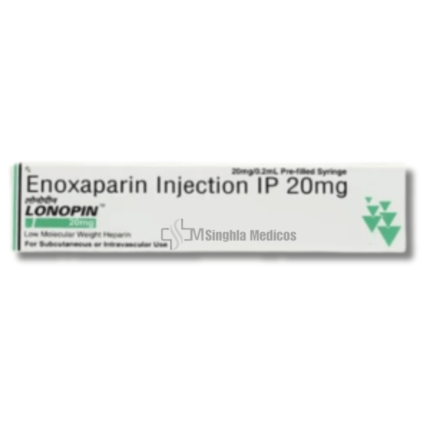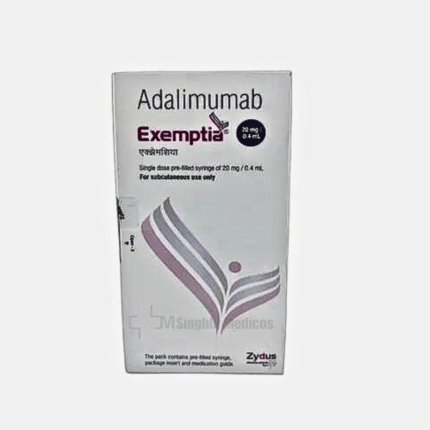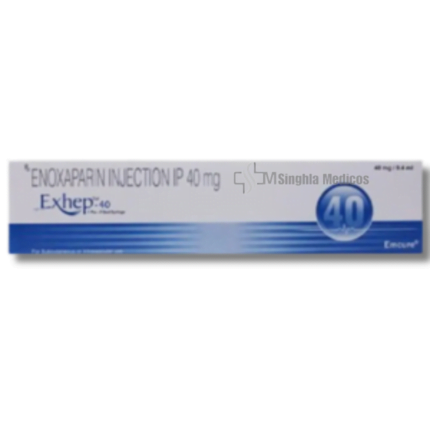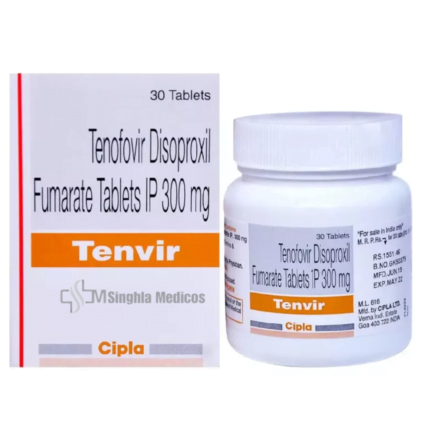

Enoxarin 40mg Injection
₹470.32 Original price was: ₹470.32.₹270.00Current price is: ₹270.00.
![]() Prescription Required
Prescription Required
Salt : Enoxaparin
Manufacturer : Zuventus
Packing : 0.4 ml in 1 prefilled syringe
PRODUCT INTRODUCTION
Enoxaparin 40mg Injection, marketed under the brand name Enoxarin, is a medication belonging to the class of anticoagulants, specifically low molecular weight heparins (LMWH). It is administered via injection and acts by preventing the formation of blood clots. Enoxarin is commonly used to prevent or treat conditions such as deep vein thrombosis (DVT), pulmonary embolism (PE), and to prevent blood clotting during certain medical procedures like surgery.
USES OF Enoxarin 40mg Injection
Enoxarin 40mg Injection is prescribed for various medical conditions and situations including:
- Prevention of deep vein thrombosis (DVT) in patients undergoing surgery, particularly orthopedic or abdominal surgeries.
- Treatment of DVT and pulmonary embolism (PE) to prevent further clot formation.
- Prevention of blood clotting in patients with conditions such as heart attacks or unstable angina.
- Management of conditions where there is a risk of blood clots, such as during hemodialysis or in patients who are immobilized due to illness.
BENEFITS OF Enoxarin 40mg Injection
Enoxarin 40mg Injection offers several benefits:
- Effective prevention and treatment of blood clots, reducing the risk of complications like stroke, heart attack, or pulmonary embolism.
- Convenient administration through injection, ensuring rapid absorption and onset of action.
- Lower risk of heparin-induced thrombocytopenia compared to unfractionated heparin.
- Suitable for use in various clinical settings and patient populations, including those with renal impairment.
- Predictable anticoagulant effect with less need for monitoring compared to other anticoagulants like warfarin.
SIDE EFFECTS OF Enoxarin 40mg Injection
While Enoxarin 40mg Injection is generally well-tolerated, some individuals may experience side effects, including:
- Bleeding, which can range from mild bruising at the injection site to serious internal bleeding.
- Injection site reactions such as pain, redness, or swelling.
- Allergic reactions, including rash, itching, difficulty breathing, or swelling of the face, lips, tongue, or throat.
- Thrombocytopenia (low platelet count), which may manifest as unusual bruising or bleeding.
- Osteoporosis with prolonged use, particularly in high doses or in patients with other risk factors.
- Elevated liver enzymes, which may indicate liver dysfunction in rare cases.
It is important for patients to be aware of these potential side effects and to promptly report any unusual symptoms to their healthcare provider.
References
-
Fox KA, White HD, Gersh BJ, et al. Antithrombotic Agents: Platelete Inhibitors, Acute Anticoagulants, Fibrinolytics, and Chronic Anticoagulants. In: Opie LH, Gersh BJ, editors. Drugs for the Heart. 8th ed. Philadelphia, Pennsylvania: Elsevier Saunders; 2013. pp. 373-74.
-
Briggs GG, Freeman RK, editors. A Reference Guide to Fetal and Neonatal Risk: Drugs in Pregnancy and Lactation. 10th ed. Philadelphia, PA: Wolters Kluwer Health; 2015. pp. 471.
Disclaimer
Singhla Medicos’s primary intention is to ensure that its consumers get information that is reviewed by experts, accurate and trustworthy. The information and contents of this website are for informational purposes only. They are not intended to be a substitute for professional medical advice, diagnosis, or treatment. Please seek the advice of your doctor and discuss all your queries related to any disease or medicine. Do not disregard professional medical advice or delay in seeking it because of something you have read on Singhla Medicos. Our mission is to support, not replace, the doctor-patient relationship.
Shipping Policy
We ship across India. Note – this is subject to change as per Company Wishes. Packages will be shipped in 24 working hours. we are closed on Sundays and will reach you in the next 2-4 days post shipping. We give the estimated time of delivery on the shipping page. However, these are indicative and depend on our shipping partner.
Delivery
The delivery times are subject to location, distance, and our logistics partners. We are not liable for any delays in delivery by the courier company/postal authorities but will help you track down a package through our partner courier services.
Your purchases may reach you from various locations in more than one package. But rest assured, you will be charged one delivery fee for the entire order. As soon as your package ships, we will email you your package tracking information.
We are bound in coverage by their reach even though we use some of India’s largest logistics companies for shipping. In case your address is in a location not served by them we would contact you to find an alternative solution to make your products reach you.












Reviews
There are no reviews yet.